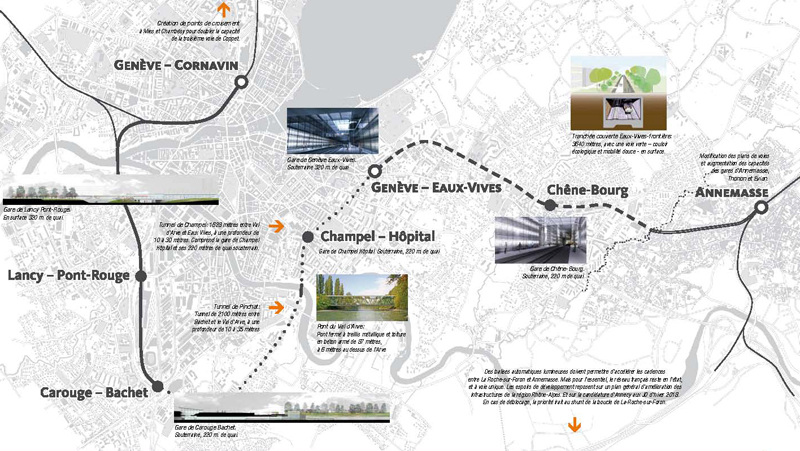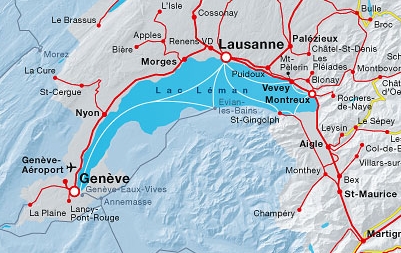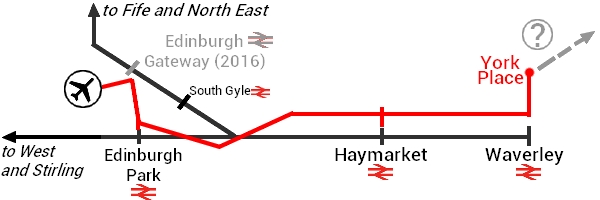|
Living in Edinburgh gives you a particular perspective on transport. The Central Belt of Scotland (roughly Glasgow / Stirling / Fife / Edinburgh) is a highly urbanised region far, far North in Great Britain. Transports are therefore very well developed, with many suburban train lines, subways in Glasgow and trams in Edinburgh. Intertown buses are well developed (in Fife for example), and it is fairly easy to navigate in the region. However, coming originally from France (a country that has built -too?- many high speed lines), travelling to the South or to Europe remains a mission. Trains to London are frequent and comfortable, but they still take at least four and a bit hours. As for the North of Scotland, where tourism and outdoor activities are well developed, the choice remains pretty weak. Therefore, a new railway line project in the region is always interesting, which is why I am trying to stay updated on the Borders Railway project which is underway and should open in 2016. I won't explain the whole project, but the idea is to reopen an old line stretching between Waverley and Tweedbank. This is not a high-speed line and it will not be linked to any other railway on the way. It is a cul-de-sac line from/to Edinburgh which will make commuters' journeys far more enjoyable than what buses can offer. Don't get me wrong: this project is a promising one. Towns like Galashiels or Tweedbank (or St Andrews, but this is a different story...) should have their own stations, trains, and all that lovely/bonkers railway universe I read too much about when I was a child. Those towns did have all of that, many years ago, until the GB network was gradually deboned.
However, although I fiercely support it, reopening old railway lines is extremely delicate in terms of symbols. As a Historian in the making, I am seeing this debate as a dangerous conflict between Securing the Future and Blaming the Past. Historians often have to differentiate History from Memory: we need to address and question the past, not criticise it and blame it. The same has to be done here. Pretty awful railway policies were undertaken in the second part of the 20th century, that is true. It is extremely stupid to rebuild something that our ancestors decided to destroy, true again. Then we need to make sure that public transport isn't just a trend, but a sustainable investment that will still make sense in fifty years time. At the moment, for many reasons (irregular timetables, fares that aren't always fair, some stations' questionable location), not enough has been done to convince local populations that public transport is a real and durable alternative to cars. When it comes to what railways mean, each small line such as the Borders Railway (or the one near my French hometown, which I will not rant about just yet), is bound to all similar ones in the country. Opening one "for fun" makes little sense, but having a nationwide coordinated network with many destinations to offer does at a completely different scale. Thus, if we are going to keep spending m(b?)illions of pounds to accommodate public transport users, let's make sure these people aren't a minority anymore. Marketers, Communicators, Policy Makers, it is time to brag and brand.
0 Comments
La grande vitesse change bel et bien les distances et les vies des personnes... Utilisons cette incroyable faculté avec précaution. High-speed rail really does change people's lives and distances between each other. Let's use that amazing power carefully.
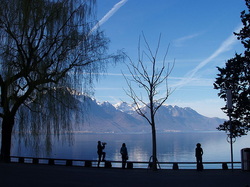 My PhD project is looking at how our current spatial perception of the Alps as a region was built during the Enlightenment and facilitated by the development of networks and routes throughout the Alpine space. One of the key areas witnessing this process, I believe, is the vicinity of Lake Geneva. It certainly lies in a unique location, between Alpine and Jura mountains, and across state borders. It is by all means a borderland, a place of transition between different regions, different topographies, and different societies. As a result, Lake Geneva has always been a particular experience for travellers and explorers. It has challenged perceptions and representations of nature, knowledge, and science. I am currently browsing dozens of British travel accounts expressing the authors' relationship with water, with mountaineering, or au contraire how Rousseau and Voltaire became Lake Geneva's top attractions beyond its extraordinary natural features. However, this article is not meant to be historical. In 2014, Lake Geneva continues to be a crucial space of transnational interactions. Geneva is building its cross-border metropolis, yet transport is once again not up to what one should expect. So we have two transport spotlights today.
Only a fool would deny Geneva's international and transnational status. I am not even referring to the handfuls of International Organisations based in the UN quarter. More importantly, Geneva is nearly entirely surrounded by French territories. About 70,000 French workers cross the Franco-Swiss border every morning to work in Geneva; considering the current exchange rate, we can assume that as many Genevese do the opposite journey to go shopping in France at weekends. This is the normal balance which you can find elsewhere along the border, near Basel or Neuchâtel. Annemasse (a few miles away across customs) has become the suburb of Geneva. And yet, these two are not linked by a railway. The project, nearly as old as Geneva's membership in the Swiss confederation, has never been finalised. This should finally be operational by the end of this decade. Named CEVA, the railway will link Geneva's main station to its little cousin located in the Eaux Vives neighbourhood (still in Switzerland, but managed by the French railway authorities and used as a terminus for trains from Savoy). Moreover, with the creation of intermediate underground stops, this will create an actual network centred on Geneva but reaching more than 50 cities, towns, villages and neighbourhoods, regardless of which side of the border they are on. The use of regional trains to create high-frequency underground networks in city centres is not new, as you can see in other Swiss cities but also in Paris, London, Glasgow or most German cities. Let's hope fares will remain simple, as the network will spread across different currencies and different transport authorities.
When it comes to Lake Geneva, the question of borders is more alive than ever. While the Franco-Swiss border lies for most parts at the middle of the lake, some of the borderline has been drawn on dry land, which creates all sorts of network-related issues. This is what happened with the Tonkin railway between Evian and St Gingolph. The line between Evian and St Gingolph (which physically exists) is no longer in service and therefore will soon become the only missing railway link around Lake Geneva. Why does this matter so much? Why is it worth comparing it to the very urban CEVA line, whilst the total population along the Tonkin railway is less than 10,000? Well, let's look at the evidence from micro to macro scale. - Located at the foot of the Alps, this region is of course very mountainous. Only one road follows the same route: that road is too narrow and runs through the centre of each town and village, which has of course led to countless deadly crashes, as local newspapers often relate. The hardest part of the job has already been done: there is a railway that only needs to be modernised. This will finally be a safe, eco-friendly and less noisy alternative. Currently stopping right at the border, at the heart of the bi-national town of St Gingolph, most people's lives are not this easily drawable and it is urgent to offer this service again. - For the whole population of the south bank of Lake Geneva (including Geneva itself!), the line will allow a new route to emerge from Geneva (via CEVA) all the way to Canton Valais, famous for its ski resorts, spa towns, and other local curiosities. The Geneva-Lausanne line, on the northern side of the lake, is saturated and it is crucial to offer a sensible alternative for those who would find the southern route more convenient. - This line does not have to be a local one. When put together with the rest of Lake Geneva, it will recreate a truly international network, binding together Geneva's famous airport and exhibition centre, Evian's thermal facilities and world-class golf courses, Montreux's Swiss Riviera, Lausanne's scientific centres, numerous International Organisations, and of course the Alps. A local association is fighting to see the line reopened. You can see their promotional film (still fictional in 2014...) below. My PhD research shows that Geneva was one of the first and most crucial places of interactions for travellers heading towards the Alpine region. When Napoleon was defeated in 1814-15, British travellers rushed back to the Alps, which they had not been able to visit since the end of the previous century. Two places were particularly important in that process: the road from Geneva to Savoy (to allow travellers to reach Chamonix and Mont-Blanc) and the eastern edge of the lake (where foreigners would sail in order to witness the place where Rousseau imagined the story of Julie). Nowadays, both places have evidently lost their top place in Geneva's travel network. Let's hope that an article written in 2020 will revise this statement.
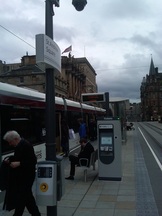 Here they are, up and running! On 31st May Edinburgh's new tram network opened to the public after years and years of chaotic construction and months of tests. I finally got the opportunity to hop on one of the CAF trams, albeit at the worst time possible (see tweet below). I could surely focus this review on the tram experience itself: how comfortable the trams are, how traffic light priority on Princes Street could be improved, or how to understand the ticketing system. However I will focus on what this new blog will be all about: the development of networks, or how to make sure that people and places are connected in the best way. If the current route map is overall satisfactory, we should nonetheless hope for further extensions in order to prevent Edinburgh's tram from becoming just a glorified Airlink. The route which opened at the end of May 2014 features undeniable perks: it runs at the heart of the city and all the way to the airport, calls at Murrayfield Stadium and through a variety of neighbourhoods. Equally it offers connections to most of Edinburgh's train stations: Waverley (well, nearly), Haymarket, and Edinburgh Park. This allows new types of connections: for instance, if you are coming from Stirling or Falkirk and heading to Edinburgh Airport, Edinburgh Park will be the connecting station for you, instead of Haymarket. This process of relieving congestion on major hubs and cutting connection time must continue. Although Haymarket is now huge and shiny, it will keep growing as a major connecting station for Scotland (between for example services from the West and the North-East) and for Edinburgh's West End at a local level. In order to avoid saturation, other types of airport and city connections for passengers coming from the North have to be created. The building of Edinburgh Gateway station will certainly help, although moving South Gyle station a few hundred yards closer to Gyle Centre could have worked better (the journey between Waverley and Forth Rail Bridge will seem even longer when the new Gogar rail-air-tram link opens in 2016). I was being a bit sarcastic about my first tram ride, unexpectedly filled with One Direction groupies heading to Murrayfield Station. However, that probably was the first real test for the network, and most of the things I saw can be written down and applied to daily airport and commute flows. To be honest, I was pleasantly surprised to see that many got off the train at Edinburgh Park to catch a slightly less crowded inbound tram instead of facing Haymarket's mess. More importantly, the extension of the tram beyond York Place will have to be questioned as soon as possible. Waiting for good feedback about the current tram route will not help (and I'm afraid the waste of money already occurred across the numerous times of uncertainty which the building phase of the tram witnessed). As everyone knows, a tram line is always more popular, reassures those who are never too sure about buses' itineraries, and sends a strong message on how a city should be planned and interconnected. For all these reasons, the North-East of the city must be able to enjoy Edinburgh's new tram. Elm Row, Leith Walk, Leith Shore, the new Scottish Government building, and Ocean Terminal are more than suited to host the tram. This will support the economic development of a promising part of the city as well as re-galvanise the shopping centre, currently not at its peak. Above all, there is a real need to drag the tram away from the mere airport question. Yes, we now have more choice in order to go catch our flights, and the current extension of the airport is very exciting. However, the tram has already done so much more for Edinburgh: it has started changing the face of the city, and it should keep doing so by pushing its east terminus away from the cosy centre, to go get some extra sunshine on Leith. Simplified presentation of tram (red), rail (black) and air connections.
|


